In this video, we’ll review how to find nursing literature using CINAHL, which stands for the Cumulated Index in Nursing and Allied Health Literature.
To access CINAHL, go to the Library Homepage and hover over the search icon at the top of the page.
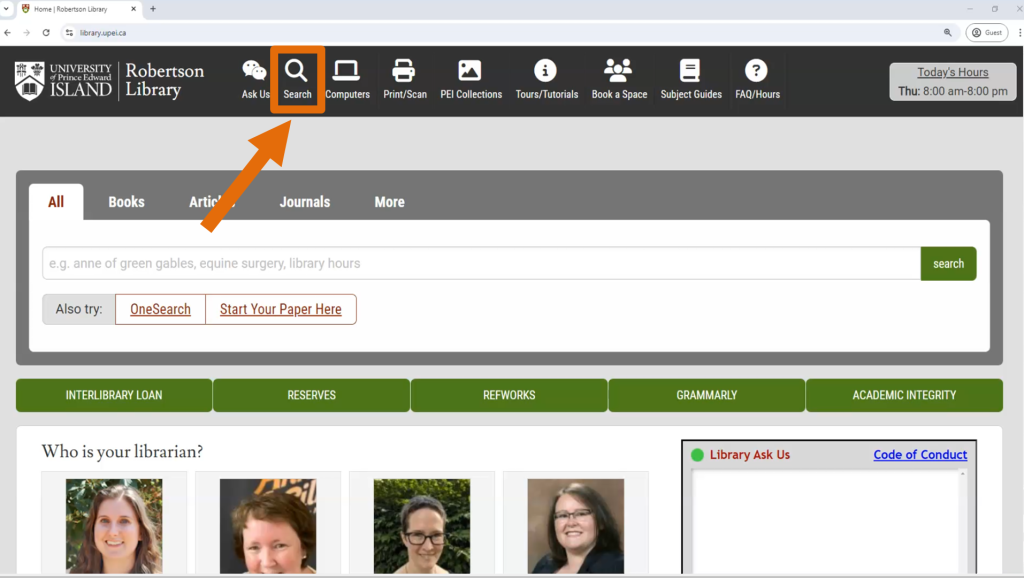
Then, select CINAHL (Nursing) from the list of most popular search tools. We included the word nursing in parentheses to help you remember the subject area of the database.
If you’re off campus, you will be asked to log in. Use your UPEI username and password to log in. This is the same username and password that you would use to access Moodle or your UPEI email.
If you are on campus, you should be taken directly to the Advanced Search page.
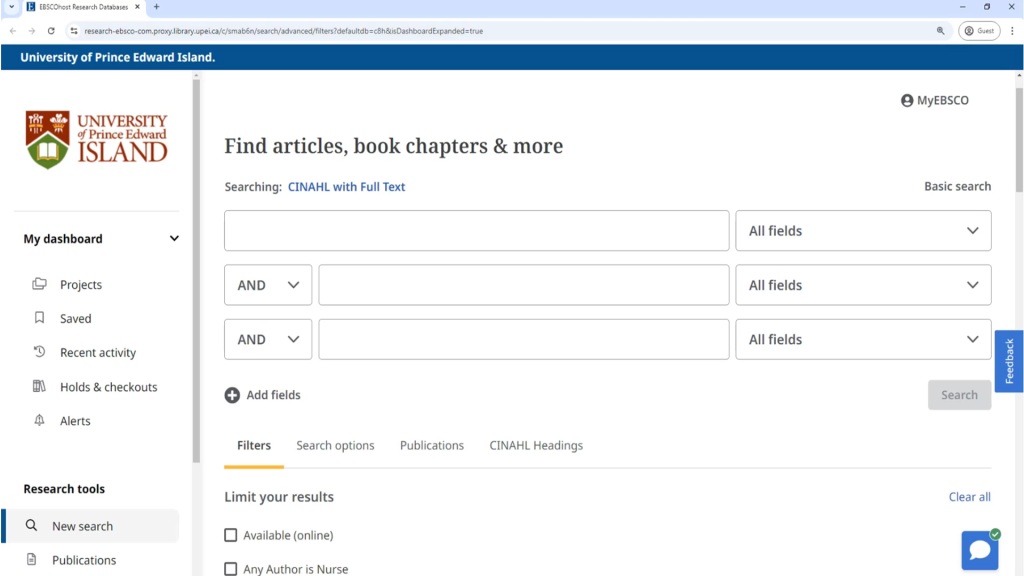
Let’s search for information on the topic What factors influence nurses' job satisfaction?
In CINAHL, we need to search for keywords or concepts, not a whole question. Our question has two important concepts: nurses and job satisfaction. Words like “factors,” “influence,” “effect,” and “relationship” are not necessary to include as search terms since they appear in articles on almost any topic. By searching for both “nurses” and “job satisfaction,” we’re already looking for articles about the relationship between those two concepts.
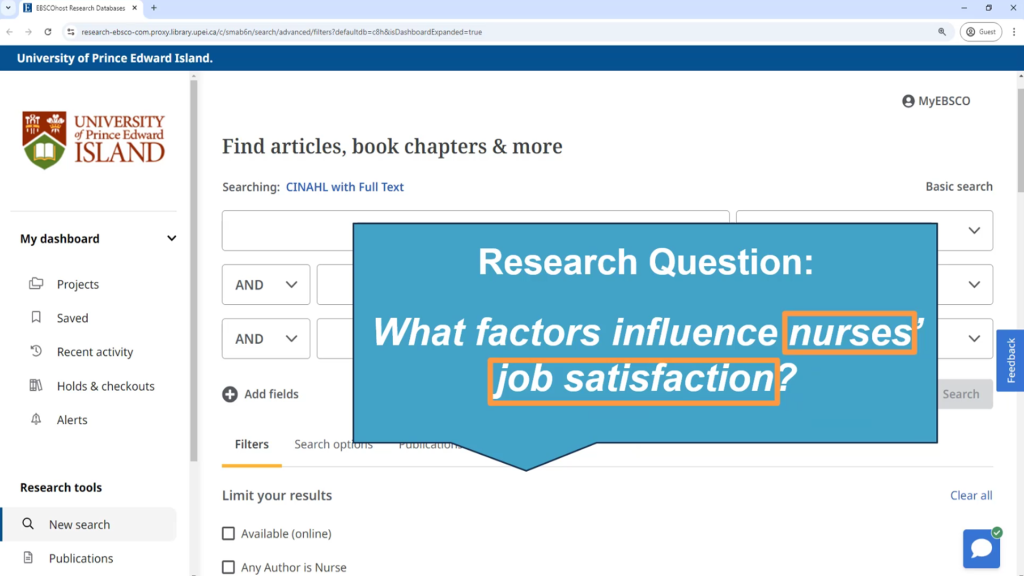
I am going to use each row of the search box for each concept in my topic. I will put the first keyword, nurse, into the top search box. As I begin typing the word “nurse” into the search box, some suggested search terms appear under the search box. This is a helpful feature of CINAHL, and I can use these if the suggested search terms are relevant.
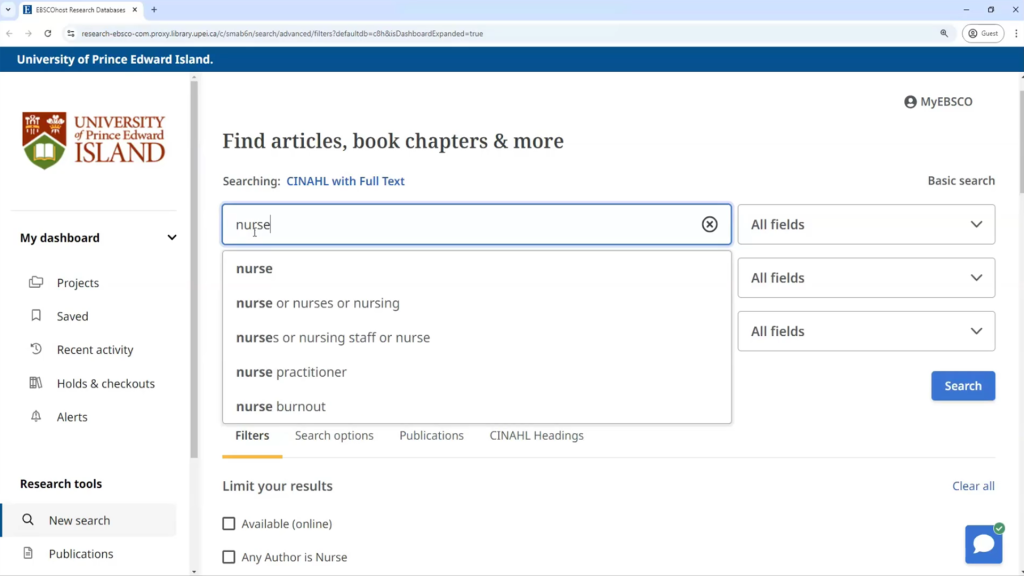
Then, I will put the second keyword, job satisfaction, in the search box on the second row. Because there are two words in the phrase “job satisfaction,” I’m going to put quotation marks around it to glue those words together.

Note the use of AND between these boxes, to specify that we want results that have both concepts.
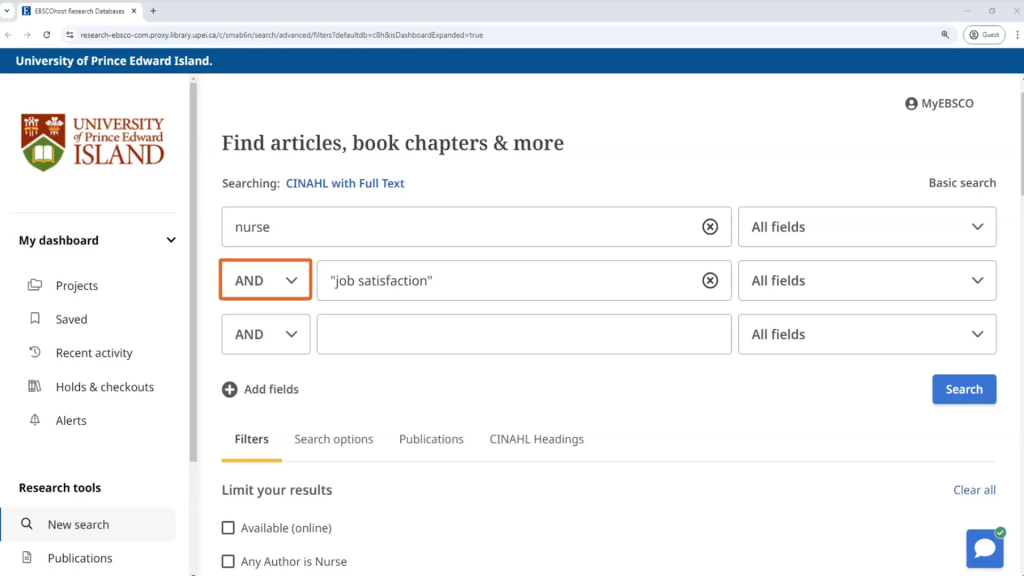
There are many useful filters in CINAHL that can help me find the information I need. To start, I’m going to select the filter for sources where Any Author is a Nurse.

After I select “Search,” I see 952 results. I can see the title of each result, the list of subject terms related to the result, the journal and publication date, the authors, and the very beginning of the abstract.

I can continue to add filters using the buttons under the search box.

For example, I can choose only the results that are Available (online) in full text. Under the “All time” button, I can choose to only see results from the past 12 months, 5 years, or 10 years. I’ll choose the past 5 years.

For more filters, I can use the “All filters” button. In this menu, I can choose results that are in a specific language, about a specific age or gender population, and more.

I can also set more specific date ranges.

I can also use the Source Type options to select only journal articles, only magazine articles, or other publication types. I will limit this search to only results from Academic Journals.
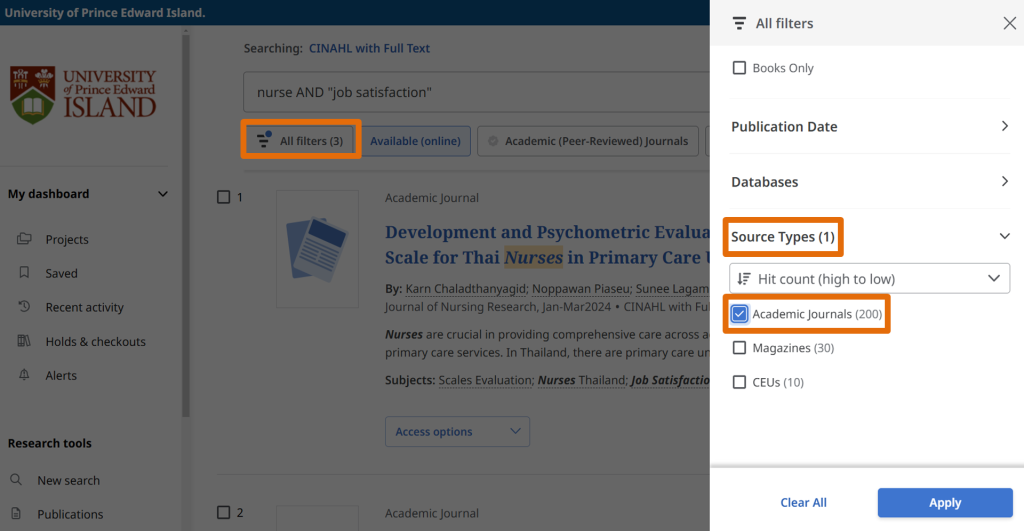
However, there are some filters in CINAHL that are only available on the Advanced Search page. I can get back there using the “Advanced Search” link under the search box.
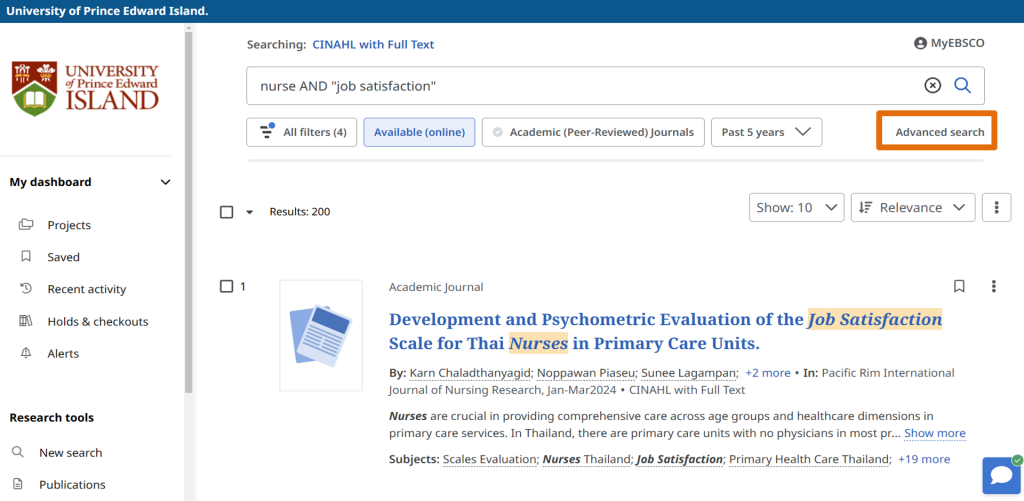
My search terms and my existing filters will come with me. Here are some of the options I can choose from Advanced Search:
● Peer Reviewed will find things that went through a formal review by knowledgeable researchers before they were published.
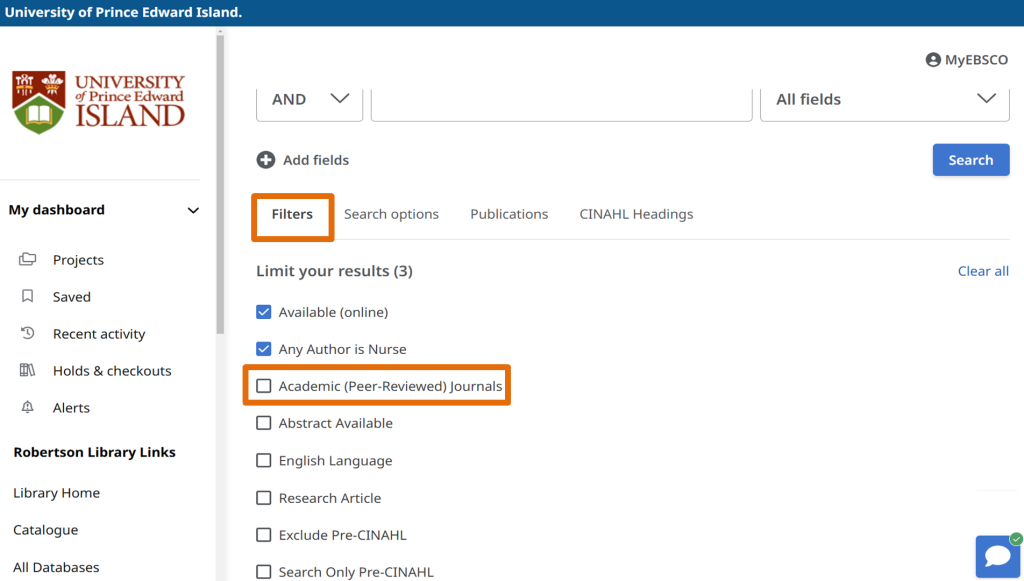
● Research Article will find articles that are about a research study, including data collection, methodology, and analysis.
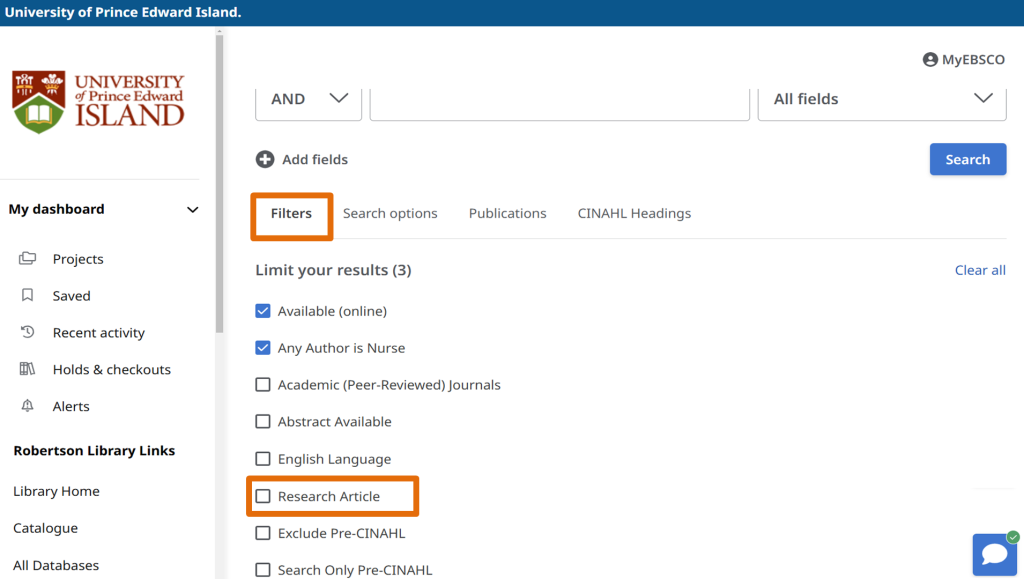
● Evidence-Based Practice will find articles and commentaries that apply the principles of evidence-based medicine.
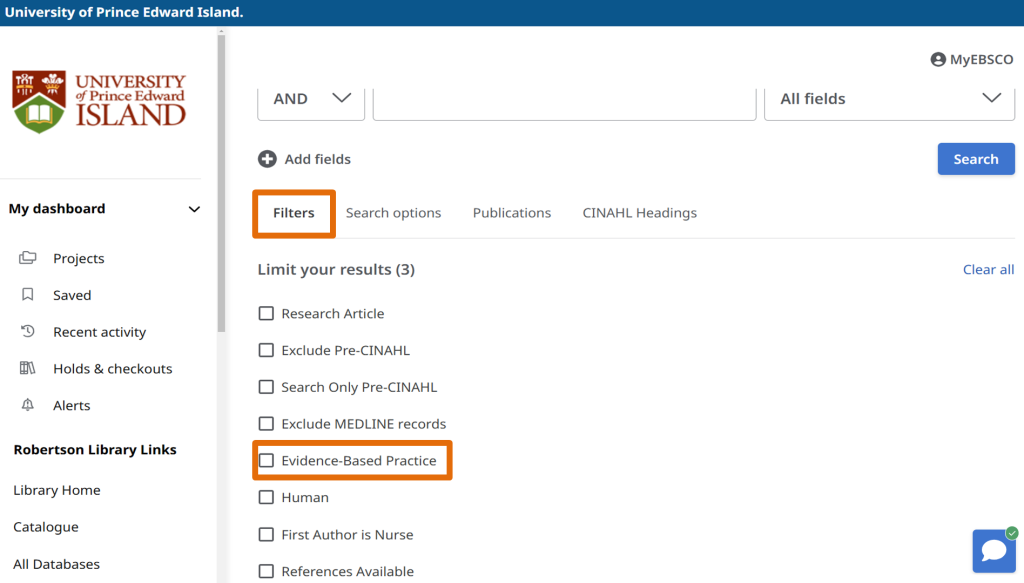
● First Author is Nurse finds a smaller set of results than Any Author is Nurse, since it only considers the first author. In nursing, it’s common practice for the lead researcher to be listed as the first author.
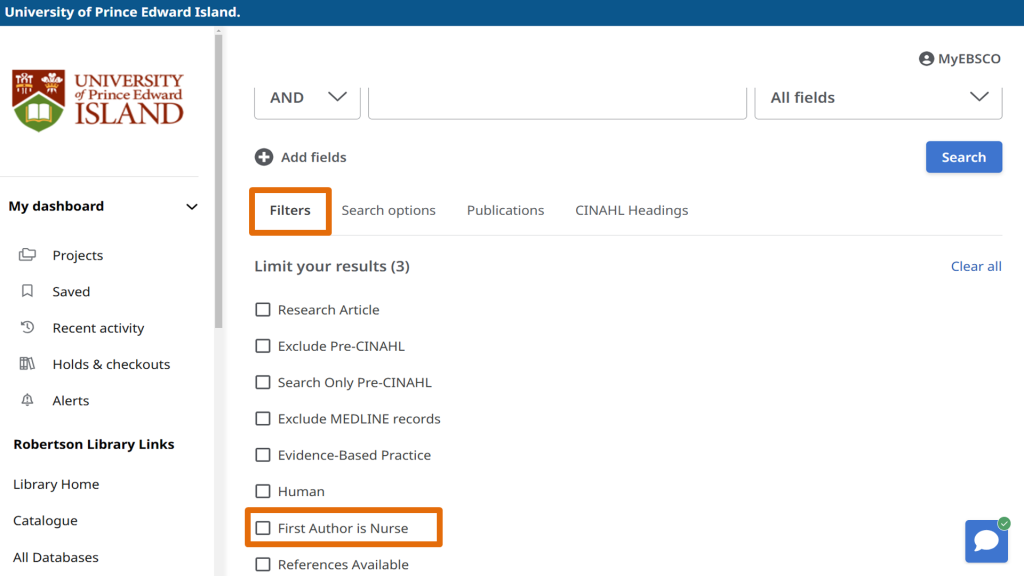
You can explore the Advanced Search page to see many more filtering options. For now, though, I’ll continue with my search.
If I want to know more about a specific search result, the “show more” and “plus more” links show me more of the abstract and all of the subject terms.
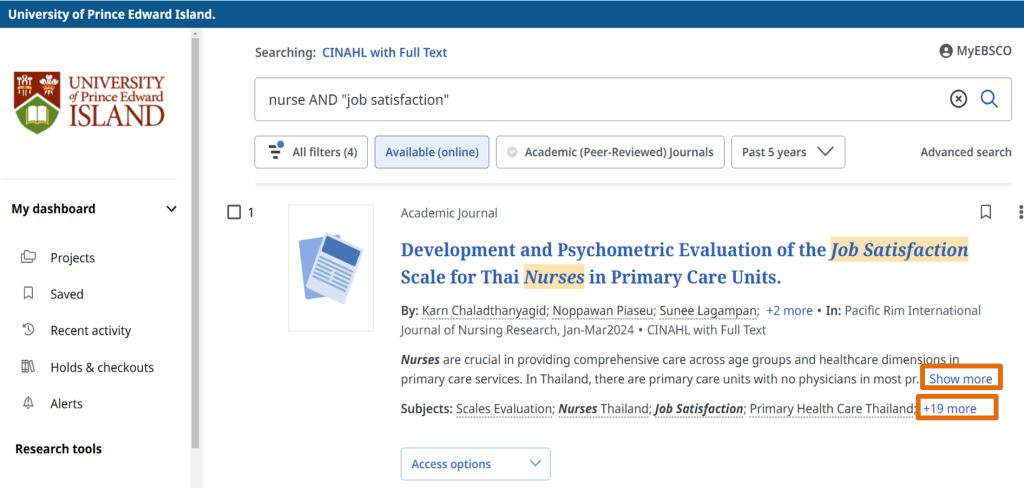
I can also click on the title to go to a page with more information,
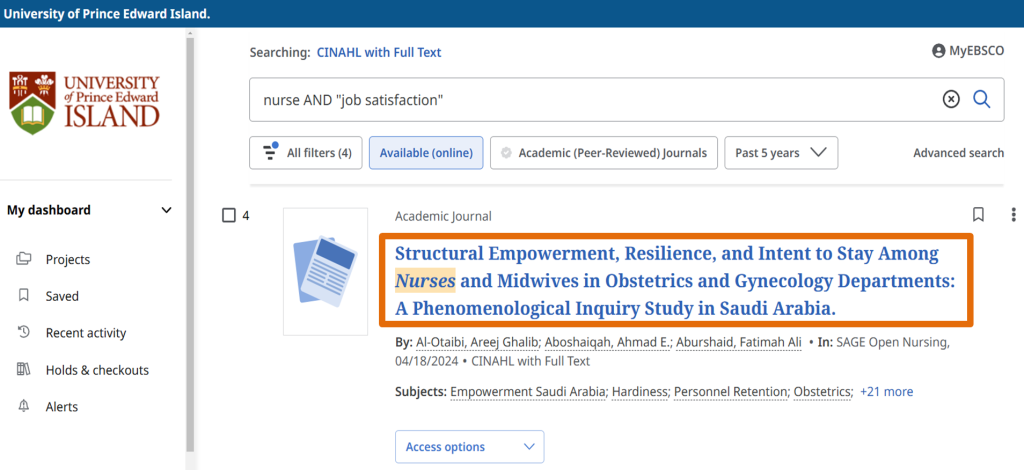
including more information about the journal in which this article was published, the subject terms, any instruments used (such as a survey tool), and the DOI.

The subject terms are a good place to look for other search term ideas. For example, if I am also interested in articles about job satisfaction among midwives and nurse midwives,

I can return to Advanced Search from the Results page and add OR midwives to my search term about nurses. I use OR here to tell CINAHL that I’m interested in any result that uses either the word “nurses” or the word “midwives.”

Once I am seeing useful search results, I can find the full text of each interesting article.
On the search results and the item page, each item has a dropdown menu labeled “Access options.” In the Access Options dropdown, the Check@UPEI (Full Text Finder) link should take me to the full text of this article. The same applies to PDF or an “Online full text” link. The PDF and “Online full text” links will open in the current tab, while other links will open in a new tab or window.

If an item only has the “Make an Interlibrary Loan (ILL) Request” link, that means that we don’t have immediate access to this article, but we may be able to borrow a copy for you from another library.

To learn more about Interlibrary Loan, you can watch the Interlibrary Loan tutorial or go to library.upei.ca/ill
If I want to see an article that I clicked on earlier, I can use the “Recent Activity” section in the menu on the left side of the page. On this page, there are two sections: Search History and Viewed Records. Search History is a list of all the searches I’ve run in this session, with the option to run them again by clicking on the search terms. The “Viewed Records” list shows the item records I’ve opened during this session.

If you need more help, AskUs at the service desk, phone us at (902)-566-0583, send an email to reference@upei.ca, or use the chat tool on the library website. You can also find the nursing librarian’s information on the library homepage.

We are here for you.
Note: A video version of this tutorial is also available.